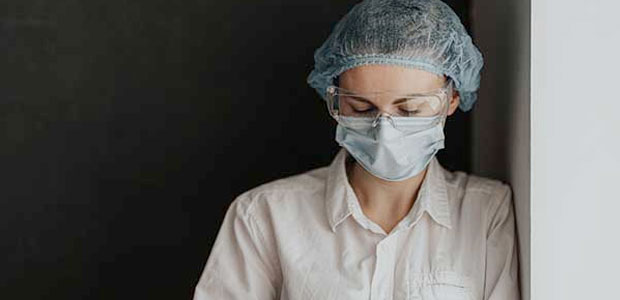
Fighting Occupational Burnout in Three Ways
Many industries face high levels of burnout, but the healthcare profession ranks at the top—especially in today’s coronavirus times. One organizational psychologist provides insight on how to fight burnout in three ways.
It’s beginning to feel like normal news: healthcare workers are on the front line of the COVID-19 pandemic, hospitals are scrambling for supplies and nurses and doctors are being forced to reuse face masks or worse: make them out of scarves.
The health care industry has been immensely strained the last few weeks—testing is scarce, supplies is dire, morale is low and cases keep climbing. As an industry that already has a high burnout rate, health care professions are more burnt out than ever. One New York Times article by organizational psychologist Adam Grant says that over half of doctors and a third of nurses suffer from burnout, and the consequences are dire.
Think about it: when healthcare providers are burnt out, patients are less likely to get quality care and more likely to die. During a pandemic like the one we’re in, the risks of burnout skyrocket as medical professionals are braving high disease exposure, long hours and inadequate resources.
Luckily, the Cleveland Clinic has been working for years on a solution to this problem.
Burnout is essentially emotional exhaustion—feeling so depleted and drained by your job that you have nothing left to give. In the U.S. over half of employees feel burned out at least some of the time. It effects everything from your productivity, mental health and physical health. There’s even evidence linking burnout to weakened immune systems and cardiovascular disease. For those reasons, the World Health Organization (WHO) has deemed burnout as an occupational syndrome.
Adam Grant pulls from his experience studying burnout to provide three ways to reduce burnout in occupational settings. He has studied burnout in schools, fire departments, governments and hospitals, to name a few.
His three options are from a model called “demand-control-support”: the basic idea that if you want to prevent or cure burnout (emotional exhaustion), you have three options: “reduce the demands of a job, provide support to deal with them or increase control over them.”
Reducing Job Demands
As Grant explains, this is a structural change that is about decreasing an employee’s workload. In health care, it usually starts with decreasing digital demands—in fact, health care workers click through pages and pages of electronic health records. The Cleveland Clinic launched a task force to simplify the process by introducing some digital solutions to lift the burden of calling pharmacies and insurance companies by making many of those tasks automated.
Increasing Support
The fear of asking for help is not unique to the healthcare industry. Many employees are afraid of being vulnerable and being a burden to others, and they want to look competent and self-reliant. Encouraging employees to ask for help has proven to reduce injuries and accidents in a number of industries including the oil and gas industry and fire departments.
In health care, it has proven helpful for hospitals to create a nurse preceptor role—a professional whose job is to help other nurses—to facilitate help-seeking.
Increasing Control
Managing emotional burnout has a lot to do with managing your emotions, too. This doesn’t mean not coping with feelings or bottling things up—instead, it’s about giving people the freedom and the skills they need to handle the demands of their jobs. It often starts with psychological change.
When you’re overwhelmed, apply some evidence-based strategies for gaining control like reappraisal and distraction. Grant gives the following examples:
“An accountant feeling overloaded by finishing taxes remotely might reframe it as flextime or refocus on family time (looks like we’ll all be getting extensions anyway). A teacher feeling daunted by the challenges of delivering online classes might reframe it as an opportunity to build new skills or refocus on topics students have been excited to explore.”
You also have the power to name our emotions. Naming your feelings and calling out your exhaustion makes it easier so recognize that it is a real, tangible problem—a problem in your circumstances. You can start to pinpoint circumstances where it rises and falls and do something about it.
The Cleveland Clinic found that a simple communication skills training helped ease workers’ overall exhaustion and burnout rates. Physicians felt less emotionally strained when they could communicate openly with their colleagues and supervisors, and they felt less disconnected from patients.
Burnout happens in most industries, for a number of reasons. However, its root of emotional exhaustion is really taking a hit for healthcare workers. Follow the demand-control-support method for some easy, simple ways to decrease burnout rates and encourage emotional healing—especially during this pandemic.